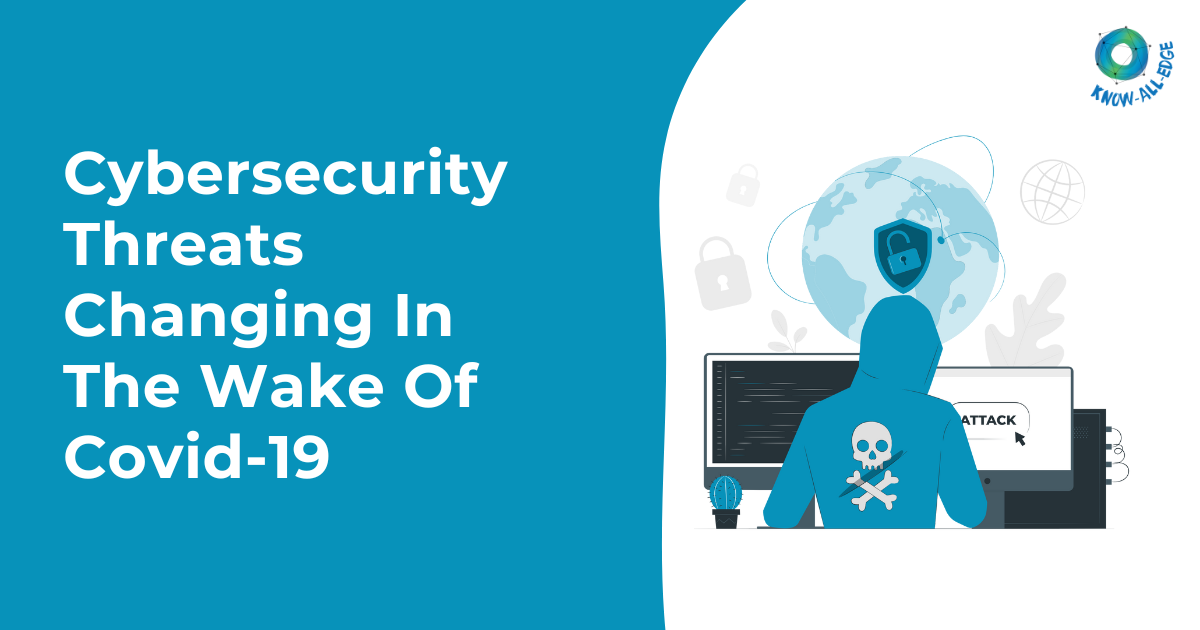Cybersecurity Threats Changing In The Wake Of Covid-19

1 Minutes 51 Seconds | 118 views
Listen This Blog Now!
Table Of Content
- Introduction
- The Evolution of Cybersecurity Amid Covid-19
- A Strong Cybersecurity Response
- Embracing a New Era of Cybersecurity
- Adapting to the Post-Crisis Digital Landscape
- Conclusion
Listen This Blog Now!
Table Of Content
- Introduction
- The Evolution of Cybersecurity Amid Covid-19
- A Strong Cybersecurity Response
- Embracing a New Era of Cybersecurity
- Adapting to the Post-Crisis Digital Landscape
- Conclusion
Introduction:
The outbreak of Covid-19 presented an unprecedented challenge for businesses worldwide, as they grappled with the need to sustain operations amidst widespread facility closures. The sudden reliance on remote work and digital infrastructure created significant cybersecurity implications. This article explores the ways in which the pandemic transformed the cybersecurity landscape and the steps organizations must take to protect themselves in this new reality.
The Evolution of Cybersecurity Amid Covid-19
As businesses shifted to remote work, their digital assets and networks became more critical than ever. This, in turn, made them lucrative targets for cybercriminals. Consequently, cyberattacks surged, and organizations faced the urgent task of enhancing their cybersecurity measures to ensure "business continuity" and safeguard sensitive information. With the rise of online business transactions and communication channels, the threat to perimeter security escalated, necessitating continuous monitoring and real-time risk assessments.
A Strong Cybersecurity Response
In response to the growing cyber risks, cybersecurity experts must take proactive steps to educate remote employees about scams and best practices to avoid falling victim to cyber threats. Leveraging e-learning and web-based training systems can be effective in this endeavor. However, the challenge extends beyond immediate actions, as IT security professionals must also strategize for the medium and long term, recognizing that remote work may persist even after the pandemic.
Embracing a New Era of Cybersecurity
Adopting agile and cloud-based security solutions becomes crucial in this new era. Cloud-based technologies offer quick deployment and dynamic scaling capabilities, empowering organizations to efficiently bolster their security measures based on evolving risks. Furthermore, remote management of security operations becomes feasible, streamlining the process for IT security specialists.
Adapting to the Post-Crisis Digital Landscape
The impact of Covid-19 extends beyond cybersecurity alone. Talent managers will need to accommodate remote work preferences and reassess work-life balance policies for enhanced productivity. Budget constraints will necessitate judicious resource allocation, prompting organizations to explore innovative approaches for investment and financial planning.
Moreover, the pandemic-induced changes have led to the emergence of new work processes and arrangements that proved successful during lockdowns. As businesses recover, governments may enact new laws and regulations based on lessons learned, impacting cybersecurity compliance requirements.
Conclusion
The Covid-19 pandemic has permanently altered the cybersecurity landscape, necessitating a robust response from organizations worldwide. Adapting to the new normal requires a focus on cloud-based security solutions, remote management, and accommodating remote work preferences.
By embracing digital transformation and agile service models, businesses can thrive in the post-crisis era while effectively mitigating cyber threats.
Search Know All Edge